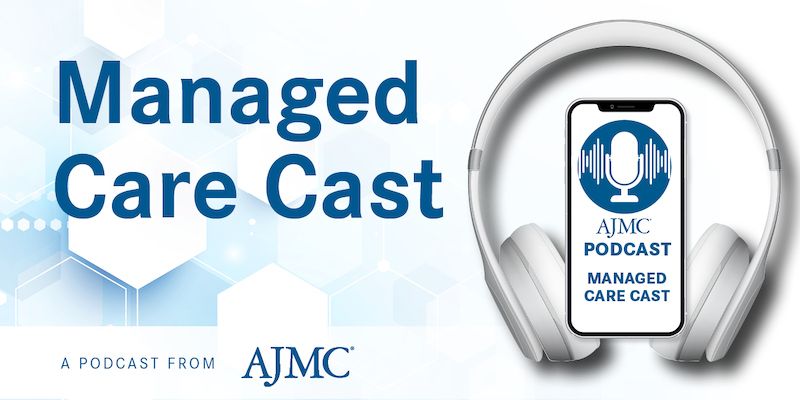Commentary
Video
Advancing Triple-Negative Breast Cancer Research in the Asia-Pacific Region
Author(s):
Sarah Anderson, oncology strategy lead director, Novotech, discusses the significance of triple-negative breast cancer research in the Asia-Pacific region, and the importance of clinical trial diversity in this region.
The genetic diversity in the Asia-Pacific region is crucial for personalized treatment approaches and the development of novel biomarkers, addressing the urgent clinical need for innovative treatments in regions with limited access to standard care for patients with triple-negative breast cancer (TNBC), says Sarah Anderson, oncology strategy lead director, Novotech.
This transcript has been lightly edited for clarity; captioning was auto generated.
Transcript
How do lower trial density and faster recruitment in the Asia-Pacific region impact the speed and scalability of TNBC clinical trials?
You know, when we think about the APAC [Asia-Pacific] region, this really offers a unique environment for triple-negative breast cancer studies. It's really characterized by the lower trial density, but also faster patient recruitment. We see this all the time and across all phases. These advantages within the APAC region creates opportunities to accelerate timelines, expand the scope of the study, but ultimately, driving innovation within the region. With the lower trial density, a key factor here is attributing to the faster recruitment. Unlike regions like North America or Europe, where there are multiple competing trials, often at the same patient pool, the APAC region has comparatively fewer ongoing trials, which makes it more attractive. These trials itself are great options for patients and investigators, and there is a need specifically for these patients or trials.
Additionally, the region's large-scale, diverse patient populations provide a significant pool of eligible patients, ensuring that clinical trials can move quickly through enrollment targets. Countries like China and India have higher prevalence of breast cancer, and these types of trials make it very valuable for triple-negative breast cancer patients. But in terms of scalability, the APAC regions offer unparalleled opportunities. The availability of diverse patient pools allows for studies to reflect a wider range of genetic, environmental and demographic factors. This diversity is invaluable in understanding triple- negative breast cancer behaviors across different patient populations. Furthermore, the region's lower operational costs make it financially feasible to conduct a large-scale global trial facilitating the generation of robust and comprehensive data.
How are combination therapies, like immunotherapy with chemotherapy, improving TNBC treatment efficacy?
The rationale behind these combination therapies lies in their ability to create synergistic effects that improve outcomes for these patients. Great examples are immune checkpoint inhibitors [ICIs]. They block the PD-1 and PD-L1 pathways, allowing the immune system's T cells to recognize and attack cancer cells. So, with that, when they are combined with chemo, this effect is amplified. A good example of this is, our studies that combine the checkpoint inhibitor with chemotherapy have demonstrated significant improved progression-free survival in patients with metastatic triple-negative breast cancer with high PD-L1 expression.
But in addition to chemoimmunotherapy combinations that integration of antibody drug conjugates, ADCs, within ICIs, have shown promise. So, ADCs are a bit different, so antibody drug conjugates deliver cytotoxic agents directly to cancer cells by sparing the healthy tissues. So, when you pair an immune checkpoint inhibitor with an ADC, this may amplify the immune activation by releasing tumor antigens into the microenvironment, further encouraging the immune system to attack the residual cancer cells.
But another option, too, is really when we think about PARP inhibitors. So, PARP inhibitors target tumors with defective DNA mechanisms, particularly in patients with BRCA1/2 mutations. This dual approach has the potential to overcome resistance mechanisms that might arise with just single agent monotherapy treatments.
So, with all of this being said, the clinical evidence that supports the efficacy of these combination trials really a good example of this was the IMpassion130 trial [NCT02425891] that showed that the chemoimmunotherapy combination can improve both the overall survival and progression-free survival in select triple-negative breast cancer patients. So similarly, as the treatment landscape expands and there's more ongoing studies, we are further investigating the combinations with the potentials of ADCs and immune checkpoint inhibitors along with PARP inhibitors to further see if we have better outcomes here within the triple-negative breast cancer space.
How is the Asia-Pacific region’s genetic diversity influencing TNBC trial design and driving innovative therapies?
So, it's a wonderful question to ask. the one thing we think about when we come into the APAC region is, genetic diversity plays a pivotal role in influencing clinical trials design. Within the APAC region, the population's wide range of genetic profiles allow research to explore different mutations and different tumor biologies. A really great example of this is the BRCA1 mutations commonly associated with triple-negative breast cancer. While these may exhibit prevalence patterns within specific populations, these also offer invaluable insights for the development of PARP inhibitors and other targeted therapies.
Furthermore, the diversity within this region enables trials to stratify patients based on genetic markers, which is absolutely key. With this, this leads to a more precise and personalized approach to treatment for patients. But also this diversity drives the identification and validation of novel biomarkers, which is critical for guiding targeted therapies. By studying populations with unique genetic and environmental factors, researchers can uncover previously unrecognized molecular pathways that contribute to triple-negative breast cancer.
But lastly, I do want to talk about that clinical need in the region. This further shapes the implementation of triple-negative breast cancer trials. The high prevalence of breast cancer and the frequent late-stage diagnosis in many APAC countries highlights the urgent need for innovative treatments. In regions with limited access to standard of care, clinical trials can provide a significant pathway for patients that can provide lifesaving options, which in turn can help with faster recruitment rates and higher levels of patient engagement.
Newsletter
Stay ahead of policy, cost, and value—subscribe to AJMC for expert insights at the intersection of clinical care and health economics.





